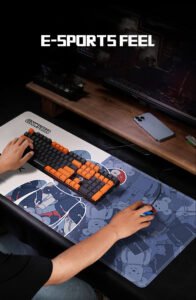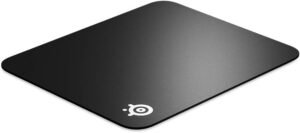In the realm of competitive gaming, every detail matters — from the responsiveness of your keyboard keys to your monitor’s refresh rate. One often-overlooked but crucial component is the mouse pad. While it may seem like a simple accessory, the surface of a mouse pad can significantly affect your gaming precision. This article explores how different mouse pad surfaces impact tracking accuracy, speed, and control, and why choosing the right pad could be the key to gaining a competitive edge.
The Role of Mouse Pads in Gaming
A mouse pad serves as the interface between your mouse and the physical surface it moves on. Its purpose is to provide a consistent texture that allows the mouse sensor — whether optical or laser — to track movement accurately. For gamers, especially those involved in fast-paced genres like first-person shooters (FPS), real-time strategy (RTS), or battle royale games, having precise aiming and smooth cursor movement is essential.
Types of Mouse Pad Surfaces
Mouse pads come in a variety of materials, each with its own texture and feel. The two main categories are hard surfaces and soft (cloth) surfaces.
- Cloth Mouse Pads
These are the most common type and are favored by many professional gamers. Cloth pads are made from fabric materials layered over a rubber base. They offer a high-friction surface, which provides greater control and precision.
Advantages:
Better control: Ideal for players who prefer low DPI (dots per inch) settings and large sweeping arm movements, as it helps with controlled aiming.
Comfort: The soft surface is comfortable for long gaming sessions.
Portability: Easy to roll up and transport.
Disadvantages:
Slower glide speed: The added friction can make quick, flick-based movements harder.
Durability: Fabric can wear down over time and absorb sweat or spills.

-
Hard Mouse Pads
These pads are made from plastic, aluminum, or glass, offering a low-friction surface that facilitates faster mouse movements.
Advantages:
Speed: Ideal for high-DPI gamers who rely on quick reflexes and fast cursor movement.
Durability: Hard surfaces generally last longer and are easy to clean.
Consistency: Provides a uniform surface for the mouse sensor.
Disadvantages:
Less control: The slickness can make micro-adjustments more difficult.
Comfort: May be less comfortable over prolonged use.
Surface Texture and Gaming Sensors
Modern gaming mice are equipped with highly advanced sensors, but even these require consistent surface textures for optimal performance. The mouse sensor works by capturing images of the surface and comparing them to detect movement. A surface that is either too smooth or too uneven can interfere with this process.
Large mouse pads (also known as desk mats) provide ample space for low-DPI users who make wide arm movements.
Thicker pads offer more cushioning, which can reduce fatigue and improve comfort, especially during long sessions.
Choosing the right size and thickness depends on your play style, desk setup, and personal preference.
Based on the above characteristics, I recommend a mouse pad factory for you.CIXI MEIYEE HOUSEWARE FACTORY has many industry-leading advantages and is committed to providing high-quality, customized mouse pad products to customers around the world. First of all, the factory is equipped with advanced production equipment, such as fully automatic silk screen printing machines, thermal transfer machines and laser cutting machines to ensure product accuracy and efficiency. Secondly, the factory has a production team with more than 20 years of experience and a strict quality management system. Each mouse pad has undergone multiple testing processes and has stable and reliable quality. In addition, MEIYEE supports OEM and ODM customization services, can quickly respond to customer needs, and meet the personalized designs of different brands. The factory is located in an industrial cluster area with convenient transportation, efficient logistics and distribution, and short delivery cycle, and is deeply trusted by domestic and foreign customers.

